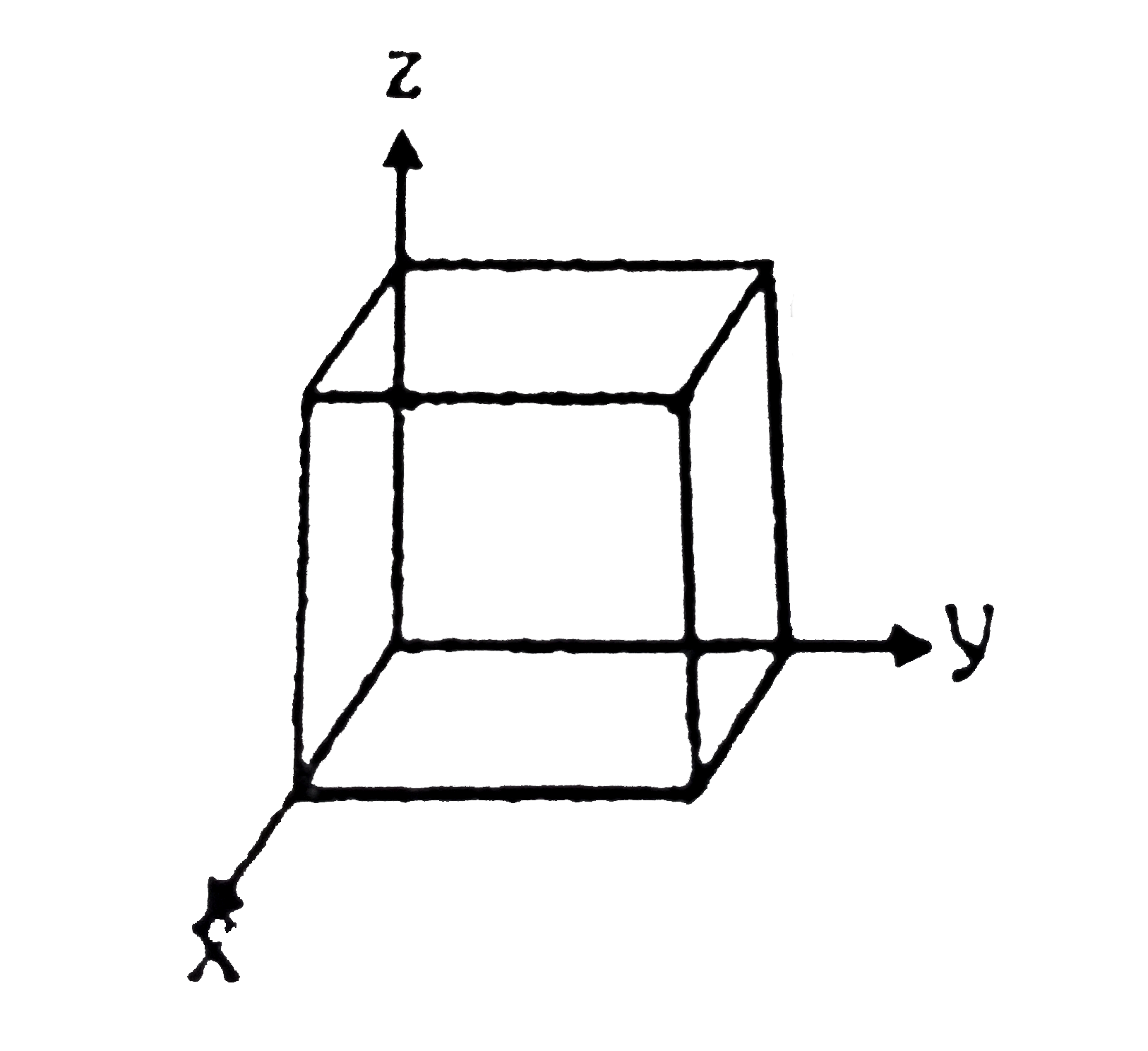The electric field in a region is radially outwards with magnitude E=αr/ε0. IN a sphere of radius R centered at the origin, calculate the value of charge in coulombs α=5π if V/m2 and R=(310)1/3m.
The correct Answer is:6
To solve the problem, we need to calculate the charge enclosed within a sphere of radius R given the electric field E=αrϵ0. Here are the steps to find the charge:
Step 1: Understand the Electric Field
The electric field is given by:
E=αrϵ0
where α=5π and ϵ0 is the permittivity of free space.
Step 2: Determine the Area of the Sphere
The surface area A of a sphere with radius R is given by:
A=4πR2
Step 3: Calculate the Electric Flux
The electric flux ΦE through the surface of the sphere is given by:
ΦE=∫E⋅dA=E⋅A
Since E is constant over the surface of the sphere, we can write:
ΦE=E⋅A=E⋅4πR2
Step 4: Substitute the Electric Field into the Flux Equation
Substituting E into the flux equation:
ΦE=(αRϵ0)⋅4πR2
This simplifies to:
ΦE=4παR3ϵ0
Step 5: Relate Electric Flux to Charge Enclosed
According to Gauss's law, the electric flux is also equal to the charge enclosed Q divided by ϵ0:
ΦE=Qϵ0
Setting the two expressions for ΦE equal gives:
4παR3ϵ0=Qϵ0
Step 6: Solve for Charge Q
Multiplying both sides by ϵ0 and rearranging gives:
Q=4παR3
Step 7: Substitute Values for α and R
Substituting α=5π and R=(310)1/3:
Q=4π(5π)((310)1/3)3
This simplifies to:
Q=4π⋅5π⋅310=4⋅5⋅310=6
Final Answer
Thus, the charge enclosed in coulombs is:
Q=6C
---
The electric field is given by:
E=αrϵ0
where α=5π and ϵ0 is the permittivity of free space.
The surface area A of a sphere with radius R is given by:
A=4πR2
The electric flux ΦE through the surface of the sphere is given by:
ΦE=∫E⋅dA=E⋅A
Since E is constant over the surface of the sphere, we can write:
ΦE=E⋅A=E⋅4πR2
Substituting E into the flux equation:
ΦE=(αRϵ0)⋅4πR2
This simplifies to:
ΦE=4παR3ϵ0
According to Gauss's law, the electric flux is also equal to the charge enclosed Q divided by ϵ0:
ΦE=Qϵ0
Setting the two expressions for ΦE equal gives:
4παR3ϵ0=Qϵ0
Multiplying both sides by ϵ0 and rearranging gives:
Q=4παR3
Substituting α=5π and R=(310)1/3:
Q=4π(5π)((310)1/3)3
This simplifies to:
Q=4π⋅5π⋅310=4⋅5⋅310=6
Thus, the charge enclosed in coulombs is:
Q=6C
Topper's Solved these Questions
Similar Questions
The electric field in a region is radially outward with magnitude E=Aγ0. The charge contained in a sphere of radius γ0 centered at the origin is
View SolutionThe electric field in a region is radially outward with magnitude E = 2r. The charge contained in a sphere of radius a = 2m centerd at the origin is 4xπε0. Find the value of x.
View SolutionThe electric field in a region is radially outward with magnitude E=Ar. Find the charge contained in a sphere of radius a centred at the origin. Take A=100Vm−2 and a=20.0cm.
View SolutionThe electric field in aregion is radially ourward with magnitude E=Ar. Find the charge contained in a sphere of radius a centred at the origin. Take A=100Vm−2 and a=20.0cm.
View SolutionThe electric field in a certain region is acting radially outwards and is given by E=Ar.A charge contained in a sphere of radius 'a' centred at the origin of the field, will given by
View SolutionThe electric field in a region is radially outward and varies with distance r as E=250 r ( volt per square metre).Calculate the charge contained in a sphere of radius 0.2 m centere at the origin.
View SolutionElectric field in a region of space is radially outward from origin and varies with distance 'r' from origin as E = kr. Find the charge enclosed in a sphere of radius 'a' centred at origin.
View SolutionThe electric field at a distance 3R/2 from the centre of a charge conducting spherical shell of radius R is E. The electric field at a distance R/2 from the centre of the sphere is
View SolutionThe electric field at a distance 3R/2 from the centre of a charge conducting spherical shell of radius R is E. The electric field at a distance R/2 from the centre of the sphere is
View SolutionElectric field in a region is given by →E=−4xˆi+6yˆj. The charge enclosed in the cube of side 1m oriented as shown in the diagram is given by α∈0. Find the value of α.
 View Solution
View Solution

